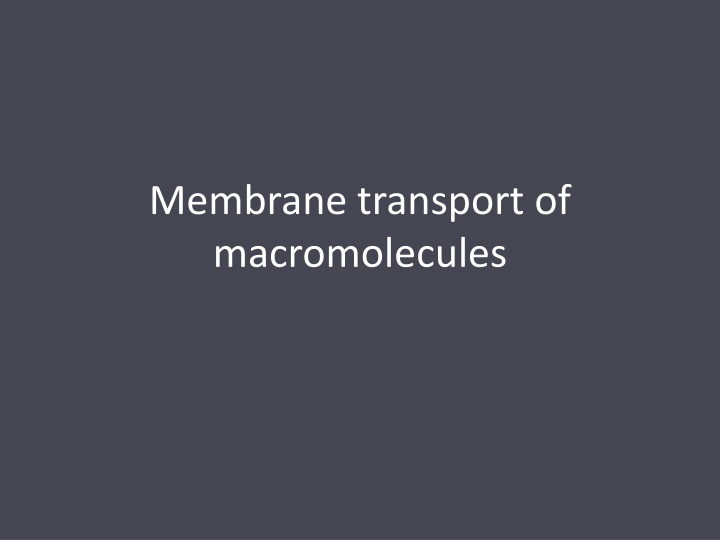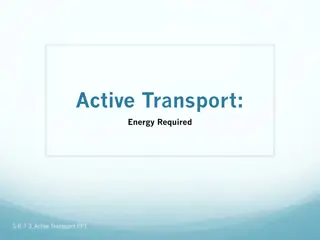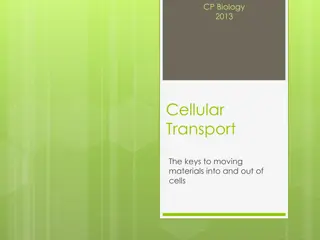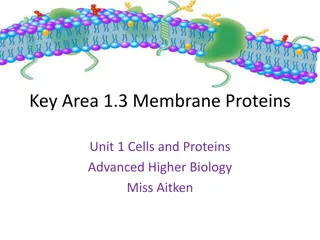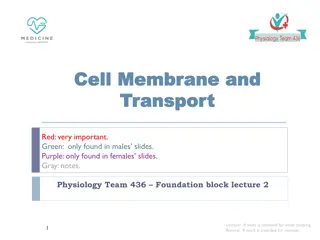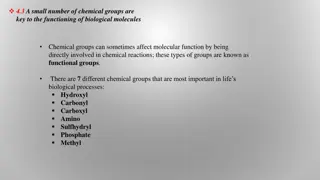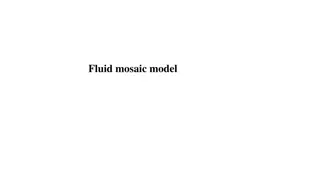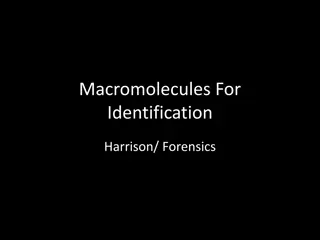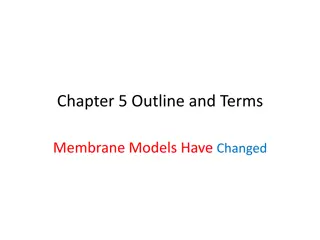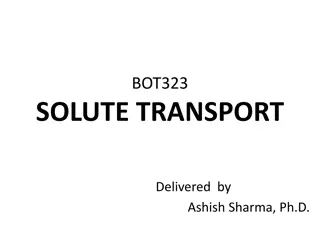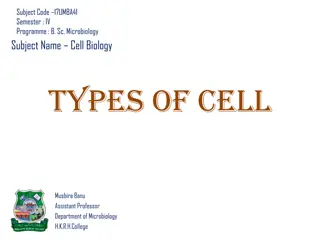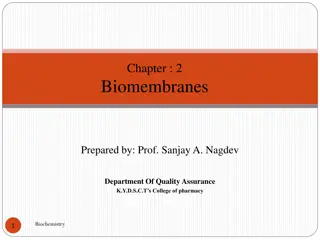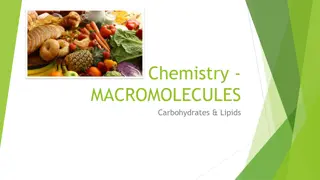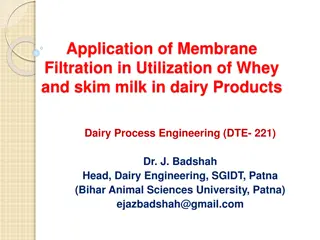Membrane Transport of Macromolecules: Understanding Vesicular Transport
Macromolecules, large liquid droplets, and particles are transported via vesicular transport through membrane-bound vesicles. This includes exocytosis and endocytosis processes, involving the expulsion and uptake of substances across the plasma membrane. Endocytosis further divides into phagocytosis, pinocytosis, and receptor-mediated endocytosis based on various criteria. Explore the mechanisms and functions of these essential cellular processes.
Download Presentation

Please find below an Image/Link to download the presentation.
The content on the website is provided AS IS for your information and personal use only. It may not be sold, licensed, or shared on other websites without obtaining consent from the author.If you encounter any issues during the download, it is possible that the publisher has removed the file from their server.
You are allowed to download the files provided on this website for personal or commercial use, subject to the condition that they are used lawfully. All files are the property of their respective owners.
The content on the website is provided AS IS for your information and personal use only. It may not be sold, licensed, or shared on other websites without obtaining consent from the author.
E N D
Presentation Transcript
Membrane transport of macromolecules
Membrane transport of macromolecules Macromolecules, large liquid droplets and particular matter cannot be transported through the unbroken plasma membrane. They are transported through the membrane bound vesicles and is called vesicular transport. 2 types Exocytosis Endocytosis
Exocytosis It involves expulsion of a substance which gets enclosed in membrane bound vesicle called exocytic vesicle. It fuses with the plasma membrane and releases its contents outside the cell. Synthetic and secretory materials are passed out of the cell in this way.
Endocytosis It is the uptake of macromolecule from the extracellular space into the cell across the plasma membrane by the formation of an intracellular vesicle pinching off from the plasma membrane.
Endocytosis can be divided into 3 types based on the size of ingested macromolecule and whether specific cell surface receptors are involved. Phagocytosis Pinocytosis Receptor mediated endocytosis
Phagocytosis It is the bulk transport of solid food materials into the cell. It involves folding of the plasma membrane around the substance forming an intracellular vesicle called phagosome. In protozoa, phagocytosis is a form of feeding, where the ingested material is broken down in the lysosomes and utilized as food. Macrophages and neutrophils (WBC) use phagocytoss to protect the organism against infection by ingesting invading microorganisms.
Pinocytosis It is the process of intake of liquid food material into the cell. During the process the cell membrane folds to form small vesicles called pinocytic vesicles or pinosomes in which small drops of fluid materials are taken into the cell.
Receptor mediated endocytosis It is the selective uptake of extracellular macromolecules (such as cholestrol) through their binding specific cell surface receptors. The receptor macromolecule complex then accumulates in clathrin coated pits and endocytosed through clathrin coated vesicle.
Clathrin coated pits and vesicles They are involved in both the exocytosis of proteins from golgi apparatus and endocytosis of material at the plasma membrane. Pits are the invaginations of the plasma membrane that are coated on their cytosolic surface with a densely packed material made up predominantly of the protein clathrin.
